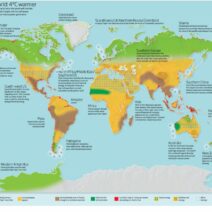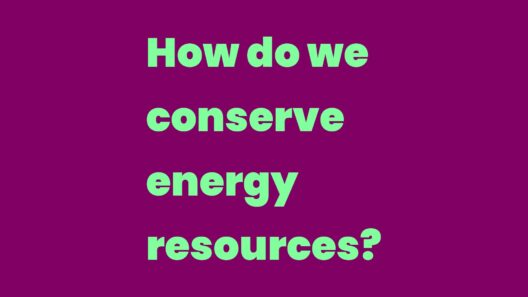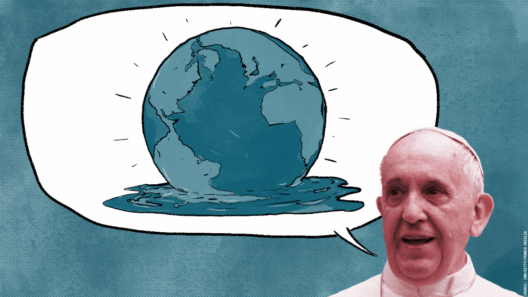In recent discussions regarding the intersection of reproductive rights and environmental sustainability, the proposition that abortion could assist in mitigating climate change has emerged as a topic of keen interest. This notion, while controversial, provokes an important examination of the underlying factors driving both population growth and environmental degradation. In order to fully unpack this concept, it is vital to explore the connection between reproductive choices, population dynamics, and their subsequent impact on the ecological footprint of humanity.
The crux of the argument hinges on the principle that population growth is a significant contributor to climate change. More people means increased demands on resources, and consequently, heightened carbon emissions. Hence, when individuals engage in family planning, including the option of abortion, they may inadvertently contribute to a smaller overall population, which might alleviate some of the pressures on the planet’s finite resources. This perspective suggests a proactive approach to environmental stewardship, wherein certain reproductive choices contribute to a lowered environmental impact.
Envisioning a world where reproductive rights are fully recognized and accessible empowers individuals to make informed decisions about their lives and family sizes. Historically, access to abortion and comprehensive reproductive healthcare has been shown to correlate with lower birth rates. When people have control over their reproductive lives, they tend to choose fewer children. As a result, this can lead to decreased resource consumption and a lower environmental burden, directly addressing one of the pressing issues associated with climate change.
The environmental impact of expanding populations manifests through various channels, including increased waste generation, intensified energy consumption, and greater reliance on fossil fuels. For instance, as urban areas expand and population densities rise, infrastructure development can significantly encroach upon natural habitats, leading to deforestation, habitat destruction, and loss of biodiversity—all of which are critical components of a healthy ecosystem. When individuals opt for smaller families or limit reproduction, they may help to mitigate these adverse consequences of overcrowding.
It is crucial to recognize that discussions around abortion and its implications for climate change delve into broader societal narratives. These conversations often reveal deeply ingrained values, ethics, and the interplay between personal choice and collective responsibility. The notion that reproductive rights can lead to a more sustainable future challenges traditional viewpoints and presents an opportunity for robust debate about individual liberties in conjunction with global responsibilities.
Furthermore, the debate encompasses substantial socioeconomic dimensions. Access to reproductive healthcare, including abortion, is frequently limited in lower-income communities, exacerbating patterns of poverty and complicating the prospects for sustainable development. In the absence of adequate reproductive rights, marginalized populations may face unplanned pregnancies, which can perpetuate cycles of disadvantage. Consequently, communities confronted with limited resources and opportunities may experience intensified environmental degradation, thus reinforcing the link between socioeconomic factors and environmental issues.
Empirical studies support the assertion that family planning and reproductive health services can yield wide-ranging benefits for both individuals and the environment. By investing in comprehensive reproductive healthcare, societies can promote not only individual well-being but also ecological resilience. Programs that provide education and resources regarding reproductive choices have demonstrated a measurable decrease in unwanted pregnancies, subsequently contributing to lower birth rates and, in turn, a reduced strain on natural resources.
This dialogue also brings to light the fundamental principles of justice and equity within the realm of climate change. Environmental justice emphasizes the need for equitable distribution of resources and the fair treatment of all individuals in policy-making processes, particularly in matters that affect marginalized groups disproportionately. The intersection of reproductive rights and environmental sustainability calls for an inclusive approach that takes into consideration the voices and experiences of all societal segments.
Ultimately, the question of whether abortion helps fight global warming highlights the complexities inherent in navigating the relationship between individual rights and collective sustainability. While some may instinctively reject the premise, it is essential to consider that the broader implications of population control through reproductive choices can indeed play a significant role in addressing the urgent challenges posed by climate change. It provokes further inquiry into how societies can foster environments where individuals are empowered to make choices that ultimately promote both personal health and planetary well-being.
In conclusion, discussions surrounding abortion and its potential environmental implications are not merely academic but hold significant real-world consequences. As the world grapples with climate change, the need for holistic approaches that integrate reproductive rights into environmental strategies becomes increasingly apparent. By acknowledging the nuanced interplay between these domains, societies can engage in more informed decision-making that respects individual autonomy while simultaneously addressing the pressing need for ecological stewardship. It is through such comprehensive dialogues that meaningful progress can be made toward a sustainable future.








